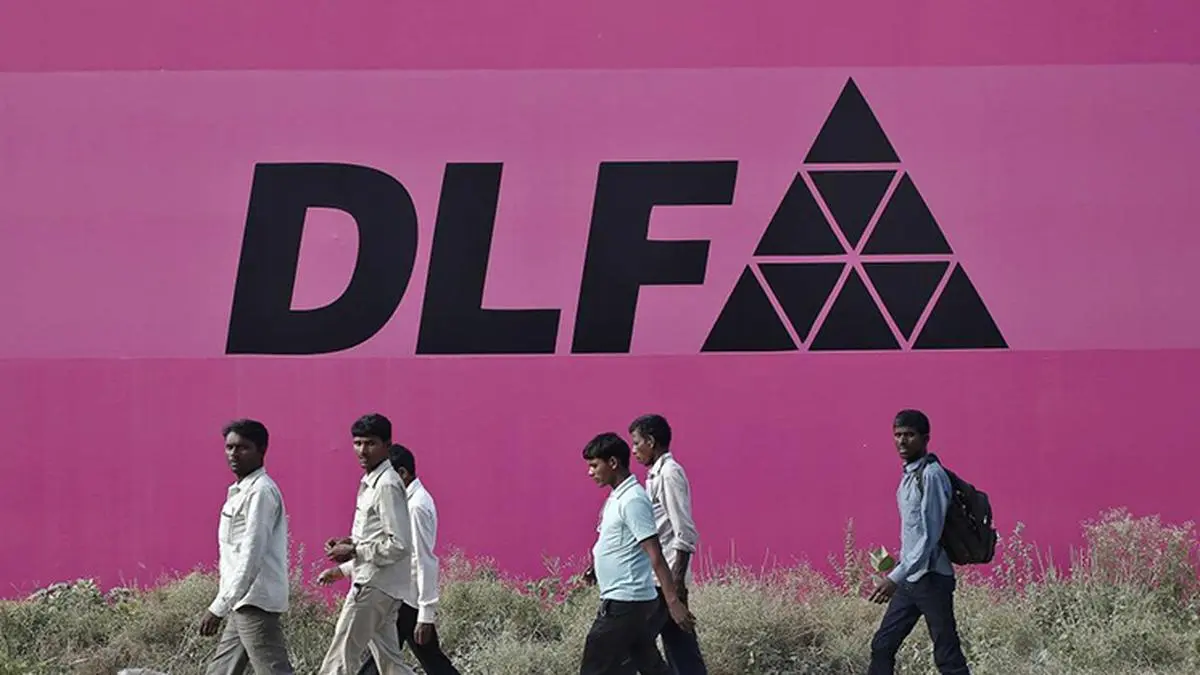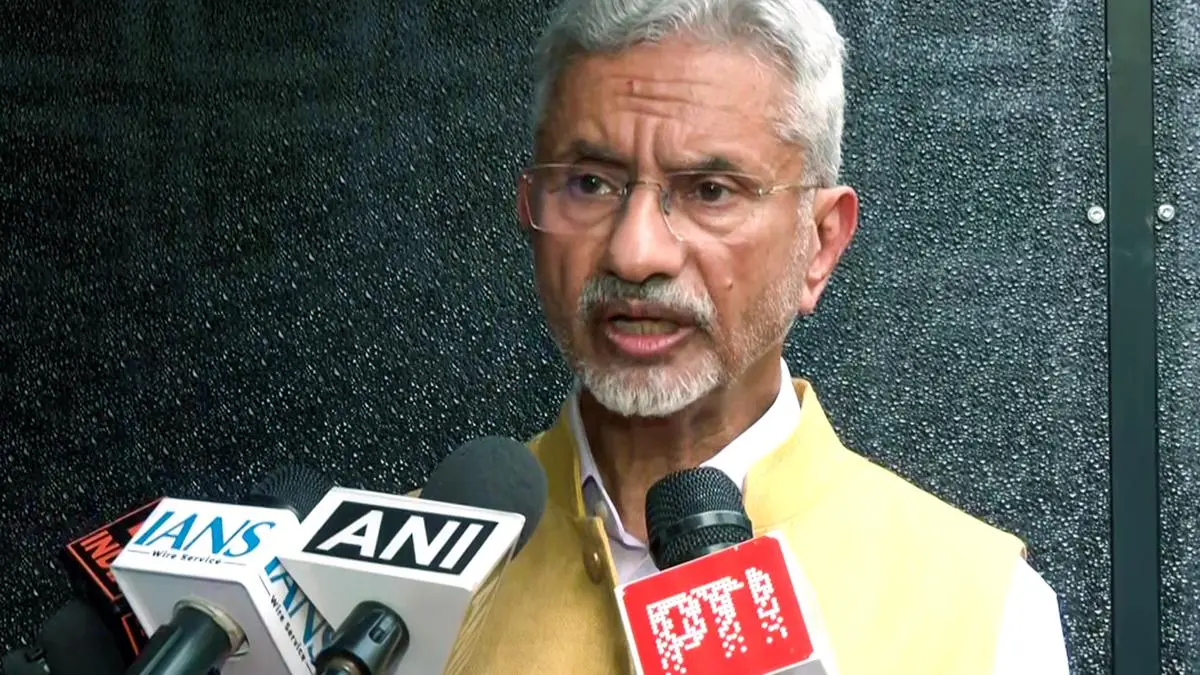Business
OpenAI to acquire Jony Ive’s AI device startup in landmark $6.5 billion deal
At io, the group set out to develop, engineer and manufacturer a collection of products for an era of artificial general intelligence — the point when technology achieves humanlike cognitive abilities. The team will now continue that mission at OpenAI, becoming a threat to the very devices that the designers helped create.Published on May 21, 2025 As part of the deal, OpenAI is paying billion in equity for io. The balance of the nearly .5 billion stems from a partnership reached in the fourth quarter of last year that involved OpenAI acquiring a 23% stake in io.Ive said ChatGPT was initially put on his radar by one of his twin sons, Charlie, and he immediately knew he had to meet Altman after using it. The new team at OpenAI will work at io’s existing workspace in Jackson Square, a neighborhood in San Francisco, and OpenAI’s current offices.“I have a growing sense that everything I’ve learned over the last 30 years has led me to this place and to this moment,” Ive said in a joint interview with OpenAI Chief Executive Officer Sam Altman. “It’s a relationship and a way of working together that I think is going to yield products and products and products.”“It will be worth the wait,” Altman said. “It’s a crazy, ambitious thing to make.”Hankey, who will become an OpenAI employee along with Tan and Cannon, said that ChatGPT’s debut prompted a realization that hardware technology would have to change. “A number of us looked at each other and said, ‘This is probably the most incredible technology of our career,’” she said in an interview.He then co-founded io last year with Apple alumni Scott Cannon, Evans Hankey and Tang Tan. Hankey was Ive’s successor at Apple and remained at the company until 2023, while Tan led iPhone and Apple Watch product design until 2024. Cannon worked at Apple before co-creating the once-popular email app Mailbox, which was acquired by Dropbox Inc.There have been public failures as well, such as the Humane Ai Pin and the Rabbit r1 personal assistant device. “Those were very poor products,” said Ive, 58. “There has been an absence of new ways of thinking expressed in products.” LoveFrom has a number of former Apple designers who helped create the look of the Mac and iPhone operating systems, including Bas Ording, Mike Matas and Chris Wilson, Ive said. They could help redesign OpenAI’s app for a new generation of consumers.OpenAI is going to create a product at a level of quality that “has never happened before in consumer hardware,” Altman said. “AI is such a big leap forward in terms of what people can do that it needs a new kind of computing form factor to get the maximum potential out of it,” he said.LoveFrom will continue its existing relationships with customers like Ferrari NV and Airbnb Inc. but won’t take on major new clients. The new hardware team within OpenAI will be overseen by Peter Welinder, who will report to Altman as a product vice president.The deal is expected to be completed this summer, pending regulatory approvals. The takeover of io will provide OpenAI with about 55 hardware engineers, software developers and manufacturing experts — a team that will build what Ive and Altman expect to be a family of devices. The two executives had already been exploring some early ideas for about two years, they said. The pair expects their first device to be a truly novel type of product. “People have an appetite for something new, which is a reflection on a sort of an unease with where we currently are,” Ive said, referring to products available today. Ive and Altman’s first devices are slated to debut in 2026.“We are obviously still in the terminal phase of AI interactions,” said Altman, 40. “We have not yet figured out what the equivalent of the graphical user interface is going to be, but we will.” When Ive departed Apple, CEO Tim Cook pitched the idea that the two parties would remain collaborators. But they never released a product together after Ive’s exit. And now the designer is embarking on a new collaboration with Altman, who he called a “rare visionary.”Ive and Altman wouldn’t elaborate on what hardware products they are working on, but they will be entering a market in its infancy. Meta Platforms Inc., the owner of Facebook and Instagram, is perhaps the most notable maker of AI devices. It sells popular Ray-Ban smart glasses that use cameras and microphones to provide context about the surrounding environment.For the British-born designer, the move marks a high-profile return to a consumer technology industry he helped pioneer. Working for years alongside Steve Jobs, he crafted the look and feel of the modern smartphone, in addition to the iPod, iPad and Apple Watch. He left Apple in 2019.OpenAI, founded a decade ago as a research organization, became a driving force in AI with the release of ChatGPT in 2022. The company’s valuation has swelled to 0 billion, and it’s looking to expand its reach through acquisitions. OpenAI is working on other transactions, such as a billion deal for AI coding software company Windsurf.More stories like this are available on bloomberg.comThat adds to the challenges of Apple, which has fallen behind its Silicon Valley peers in artificial intelligence. The company’s AI platform, released last year, lacks the capabilities of rival systems and relies in part on OpenAI’s ChatGPT chatbot to fill in the gaps.The purchase — the largest in OpenAI’s history — will provide the company with a dedicated unit for developing AI-powered devices. Acquiring the secretive startup, named io, also will secure the services of Ive and other former Apple designers who were behind iconic products such as the iPhone. OpenAI also shook up its management ranks this month, with the San Francisco-based company appointing Instacart chief Fidji Simo as the CEO of applications. She reports directly to Altman, allowing him to focus on the broader strategy.“I have felt that my most important and useful work is ahead,” Ive said, adding that he’s been “training” for this moment. He compares the experience to Apple in the late 1990s and early 2000s, before the iPod and iPhone. “I’m just really, really grateful we all found each other.” Ive was once described by Jobs as his “spiritual partner,” and his new stint designing rival technology products could be seen as a bad omen for Apple — a company already struggling to compete in AI. In the interview, Altman said Jobs would be “damn proud” of Ive’s latest move. Still, Ive and Altman don’t see the iPhone disappearing anytime soon. “In the same way that the smartphone didn’t make the laptop go away, I don’t think our first thing is going to make the smartphone go away,” Altman said. “It is a totally new kind of thing.” While Ive and LoveFrom will remain independent, they will take over design for all of OpenAI, including its software. Altman said his first conversations with Ive weren’t about hardware, but rather about how to improve the interface of ChatGPT. Separately, OpenAI’s startup fund also invested in Ive’s company at that time. Billionaire philanthropist Laurene Powell Jobs is an io backer as well, through her firm the Emerson Collective. Other investors include Sutter Hill Ventures, Thrive Capital, Maverick Capital and SV Angel. Altman doesn’t have equity in io, OpenAI said.“The phone, as it currently is, is a remarkable general-purpose device,” Ive said, adding that people will connect with AI in “very new ways.”OpenAI will acquire the AI device startup co-founded by Apple Inc. veteran Jony Ive in a nearly .5 billion all-stock deal, joining forces with the legendary designer to make a push into hardware.When he left Apple six years ago, Ive started the firm LoveFrom, a collective of designers and engineers. The staff includes veterans of Apple’s hardware and software departments, as well as friends of Ive and other collaborators.Tan, who was central to developing every version of the iPhone within Apple’s hardware engineering department, said the new team isn’t tied to a “legacy” and will have an opportunity to “rethink this space.” Still, actually delivering a product will take a while.
While Ive and LoveFrom will remain independent, they will take over design for all of OpenAI, including its software. Altman said his first conversations with Ive weren’t about hardware, but rather about how to improve the interface of ChatGPT. When he left Apple six years ago, Ive started the firm LoveFrom, a collective of designers and engineers. The staff includes veterans of Apple’s hardware and software departments, as well as friends of Ive and other collaborators.Ive said ChatGPT was initially put on his radar by one of his twin sons, Charlie, and he immediately knew he had to meet Altman after using it. The new team at OpenAI will work at io’s existing workspace in Jackson Square, a neighborhood in San Francisco, and OpenAI’s current offices.“We are obviously still in the terminal phase of AI interactions,” said Altman, 40. “We have not yet figured out what the equivalent of the graphical user interface is going to be, but we will.” Published on May 21, 2025 The deal is expected to be completed this summer, pending regulatory approvals. The takeover of io will provide OpenAI with about 55 hardware engineers, software developers and manufacturing experts — a team that will build what Ive and Altman expect to be a family of devices. The two executives had already been exploring some early ideas for about two years, they said. “I have a growing sense that everything I’ve learned over the last 30 years has led me to this place and to this moment,” Ive said in a joint interview with OpenAI Chief Executive Officer Sam Altman. “It’s a relationship and a way of working together that I think is going to yield products and products and products.”Hankey, who will become an OpenAI employee along with Tan and Cannon, said that ChatGPT’s debut prompted a realization that hardware technology would have to change. “A number of us looked at each other and said, ‘This is probably the most incredible technology of our career,’” she said in an interview.“I have felt that my most important and useful work is ahead,” Ive said, adding that he’s been “training” for this moment. He compares the experience to Apple in the late 1990s and early 2000s, before the iPod and iPhone. “I’m just really, really grateful we all found each other.” When Ive departed Apple, CEO Tim Cook pitched the idea that the two parties would remain collaborators. But they never released a product together after Ive’s exit. And now the designer is embarking on a new collaboration with Altman, who he called a “rare visionary.”OpenAI also shook up its management ranks this month, with the San Francisco-based company appointing Instacart chief Fidji Simo as the CEO of applications. She reports directly to Altman, allowing him to focus on the broader strategy.For the British-born designer, the move marks a high-profile return to a consumer technology industry he helped pioneer. Working for years alongside Steve Jobs, he crafted the look and feel of the modern smartphone, in addition to the iPod, iPad and Apple Watch. He left Apple in 2019.Separately, OpenAI’s startup fund also invested in Ive’s company at that time. Billionaire philanthropist Laurene Powell Jobs is an io backer as well, through her firm the Emerson Collective. Other investors include Sutter Hill Ventures, Thrive Capital, Maverick Capital and SV Angel. Altman doesn’t have equity in io, OpenAI said.The purchase — the largest in OpenAI’s history — will provide the company with a dedicated unit for developing AI-powered devices. Acquiring the secretive startup, named io, also will secure the services of Ive and other former Apple designers who were behind iconic products such as the iPhone. OpenAI, founded a decade ago as a research organization, became a driving force in AI with the release of ChatGPT in 2022. The company’s valuation has swelled to 0 billion, and it’s looking to expand its reach through acquisitions. OpenAI is working on other transactions, such as a billion deal for AI coding software company Windsurf.That adds to the challenges of Apple, which has fallen behind its Silicon Valley peers in artificial intelligence. The company’s AI platform, released last year, lacks the capabilities of rival systems and relies in part on OpenAI’s ChatGPT chatbot to fill in the gaps.Ive and Altman wouldn’t elaborate on what hardware products they are working on, but they will be entering a market in its infancy. Meta Platforms Inc., the owner of Facebook and Instagram, is perhaps the most notable maker of AI devices. It sells popular Ray-Ban smart glasses that use cameras and microphones to provide context about the surrounding environment.“The phone, as it currently is, is a remarkable general-purpose device,” Ive said, adding that people will connect with AI in “very new ways.”Still, Ive and Altman don’t see the iPhone disappearing anytime soon. “In the same way that the smartphone didn’t make the laptop go away, I don’t think our first thing is going to make the smartphone go away,” Altman said. “It is a totally new kind of thing.” LoveFrom will continue its existing relationships with customers like Ferrari NV and Airbnb Inc. but won’t take on major new clients. The new hardware team within OpenAI will be overseen by Peter Welinder, who will report to Altman as a product vice president.He then co-founded io last year with Apple alumni Scott Cannon, Evans Hankey and Tang Tan. Hankey was Ive’s successor at Apple and remained at the company until 2023, while Tan led iPhone and Apple Watch product design until 2024. Cannon worked at Apple before co-creating the once-popular email app Mailbox, which was acquired by Dropbox Inc.OpenAI will acquire the AI device startup co-founded by Apple Inc. veteran Jony Ive in a nearly .5 billion all-stock deal, joining forces with the legendary designer to make a push into hardware.Tan, who was central to developing every version of the iPhone within Apple’s hardware engineering department, said the new team isn’t tied to a “legacy” and will have an opportunity to “rethink this space.” Still, actually delivering a product will take a while.LoveFrom has a number of former Apple designers who helped create the look of the Mac and iPhone operating systems, including Bas Ording, Mike Matas and Chris Wilson, Ive said. They could help redesign OpenAI’s app for a new generation of consumers.OpenAI is going to create a product at a level of quality that “has never happened before in consumer hardware,” Altman said. “AI is such a big leap forward in terms of what people can do that it needs a new kind of computing form factor to get the maximum potential out of it,” he said.More stories like this are available on bloomberg.comAt io, the group set out to develop, engineer and manufacturer a collection of products for an era of artificial general intelligence — the point when technology achieves humanlike cognitive abilities. The team will now continue that mission at OpenAI, becoming a threat to the very devices that the designers helped create.There have been public failures as well, such as the Humane Ai Pin and the Rabbit r1 personal assistant device. “Those were very poor products,” said Ive, 58. “There has been an absence of new ways of thinking expressed in products.” The pair expects their first device to be a truly novel type of product. “People have an appetite for something new, which is a reflection on a sort of an unease with where we currently are,” Ive said, referring to products available today. Ive and Altman’s first devices are slated to debut in 2026.“It will be worth the wait,” Altman said. “It’s a crazy, ambitious thing to make.”As part of the deal, OpenAI is paying billion in equity for io. The balance of the nearly .5 billion stems from a partnership reached in the fourth quarter of last year that involved OpenAI acquiring a 23% stake in io.Ive was once described by Jobs as his “spiritual partner,” and his new stint designing rival technology products could be seen as a bad omen for Apple — a company already struggling to compete in AI. In the interview, Altman said Jobs would be “damn proud” of Ive’s latest move.
Business
United Spirits Q4 PAT rises 17% to ₹451 cr for Q4FY25

For the full year FY25, it reported a PAT of ₹1,158 crore, up from last fiscal’s ₹1,312 crore.


Published on May 20, 2025
Business
DLF Q4 net profit rises 37% to ₹1,268 cr; FY25 profit surges 59%

“The Board has recommended a dividend of ₹6 per share for shareholders’ approval. This payout would signify a year-on-year growth of 20% in the dividend compared to the previous year,” the company said in a statement.For the full year, the company’s net profit stood at ₹4,357 crore, up 59 per cent y-o-y; while revenues (consolidated) stood at Rs 8996 crore. Revenue was driven by new sales bookings of ₹21,223 crore, up 44 per cent y-o-y.Published on May 19, 2025 The company generated a net cash surplus of ₹5,302 crore during the fiscal year, and its net cash position improved to ₹6,848 crore for FY25.


DLF’s annuity business, DLF Cyber City Developers Limited (DCCDL), stood at ₹6,448 crore; EBITDA stood at ₹4,949 crore, reflecting a y-o-y growth of 11%; consolidated profit for the year stood at ₹2,461 crore, a y-o-y growth of 46%.Published on May 19, 2025 The company generated a net cash surplus of ₹5,302 crore during the fiscal year, and its net cash position improved to ₹6,848 crore for FY25.“The Board has recommended a dividend of ₹6 per share for shareholders’ approval. This payout would signify a year-on-year growth of 20% in the dividend compared to the previous year,” the company said in a statement.For the full year, the company’s net profit stood at ₹4,357 crore, up 59 per cent y-o-y; while revenues (consolidated) stood at Rs 8996 crore. Revenue was driven by new sales bookings of ₹21,223 crore, up 44 per cent y-o-y.The other big-ticket launch, DLF Privana West, witnessed a complete sellout within a few days of the soft launch, clocking approximately ₹5,600 crore of new sales bookings.“The Dahlias, received encouraging demand and generated ₹13,744 crore in new sales bookings during the fiscal. This has resulted in the monetization of approximately 39 percent of the estimated total sales potential of this project within the first year of its launch,” the company said in a statement. The country’s largest realtor, DLF, reported a net profit of ₹1,268 crore, up 37 per cent y-o-y, for the quarter ending March 31, 2025. Revenue (consolidated) for the period stood at ₹3,348 crore.
Business
Editorial. Pressure tactics

Since April 8, when President Trump slapped his reciprocal tariffs on 57 countries with a 90-day deadline for them to take effect, his administration has gone overboard in ramping up the pressure on India. The gambit here is crudely simple — to force India to ink a deal in these 90 days, before July 8, in order to escape the 26 per cent tariffs that are expected to kick in after that. The same trick is being played out with the rest of the world as well, forcing quite a few countries to line up for talks with the US. In India’s case, Trump and his colleagues have cynically generated a lot of confusion. India has maintained a studied silence in the face of zero tariff claims. Its reticence was perhaps aimed at ensuring that the talks proceeded in good faith. But US’ actions have marred the process. Trump has proposed a ‘big beautiful Bill’ that may ‘tax’ 5 per cent of billion NRI remittance outflows. India should be circumspect in the face of pressure, without allowing the US to set the pace in the talks. A bad deal cobbled in haste is far worse than none at all. Meanwhile, India sent out another sharp message that it will look out for its interests. In a throwback to Trump 1.0, India has proposed retaliatory action on US’ tariffs on steel and aluminium. However, it needs to work out a plan with respect to other areas as well. At the outset, it should be clear that the US’ interests in India go beyond trade per se to persuading India to alter its regulatory systems with respect to GM food, e-commerce, big tech, pharma and other high tech sectors. It is also keen on access to India’s food (maize and soyabean) and dairy sector, besides selling defence equipment and oil. India has enough in its toolkit to squeeze a deal that does not hurt its interests. A levy on e-commerce monopolies, a cap on royalty payments, applying data localisation rules and compulsory licensing of patented drugs can be used to ward off an adverse outcome.


There is scope to bring down tariffs in products which are zero-rated with other FTAs. A deal that brings down tariffs on India’s goods to 10 per cent is possible without much sacrifice. But Trump’s bluff and bluster must be called out, whether it is over trade or matters of national security, even as we keep our ties with US on an even keel. Meanwhile, India sent out another sharp message that it will look out for its interests. In a throwback to Trump 1.0, India has proposed retaliatory action on US’ tariffs on steel and aluminium. However, it needs to work out a plan with respect to other areas as well. At the outset, it should be clear that the US’ interests in India go beyond trade per se to persuading India to alter its regulatory systems with respect to GM food, e-commerce, big tech, pharma and other high tech sectors. It is also keen on access to India’s food (maize and soyabean) and dairy sector, besides selling defence equipment and oil. India has enough in its toolkit to squeeze a deal that does not hurt its interests. A levy on e-commerce monopolies, a cap on royalty payments, applying data localisation rules and compulsory licensing of patented drugs can be used to ward off an adverse outcome. In a move that perhaps marks a shift in the way India is approaching trade talks with the US, the External Affairs Minister S Jaishankar has firmly refuted the US’ claim, made repeatedly in recent weeks, that India has agreed to nil tariffs on US imports. Jaishankar’s statement last week tersely and firmly clarifies that trade talks are in progress, and ‘nothing is decided until everything is decided’. India has cleared the air, and it was high time that it did so. It coincides with the upcoming trade talks between the two countries this week; Commerce and Industries Minister Piyush Goyal is in the US with his team of negotiators.
-

 india2 years ago
india2 years ago“Major Crash of Sukhoi Su-30 and Mirage 2000 Fighter Jets in Madhya Pradesh”
-

 Sports2 years ago
Sports2 years agoWFI meetings on April 16, elections likely to be discussed
-

 india1 year ago
india1 year agoPM Modi Meets Deve Gowda for Seat Sharing Talks
-

 india1 year ago
india1 year agoBengaluru: False threat to bomb Raj Bhavan
-

 india2 years ago
india2 years ago“AIMIM to Contest 50 Seats in Upcoming Telangana Assembly Elections”
-

 Entertainment1 year ago
Entertainment1 year agoAnant Ambani: Controversy at the Ambani Pre-Wedding Bash
-

 Karnataka2 years ago
Karnataka2 years agoWomen have to show their Aadhaar to travel free on KSRTC bus
-

 Entertainment2 years ago
Entertainment2 years agoRajinikanth is Moideen Bhai in ‘Lal Salaam’













